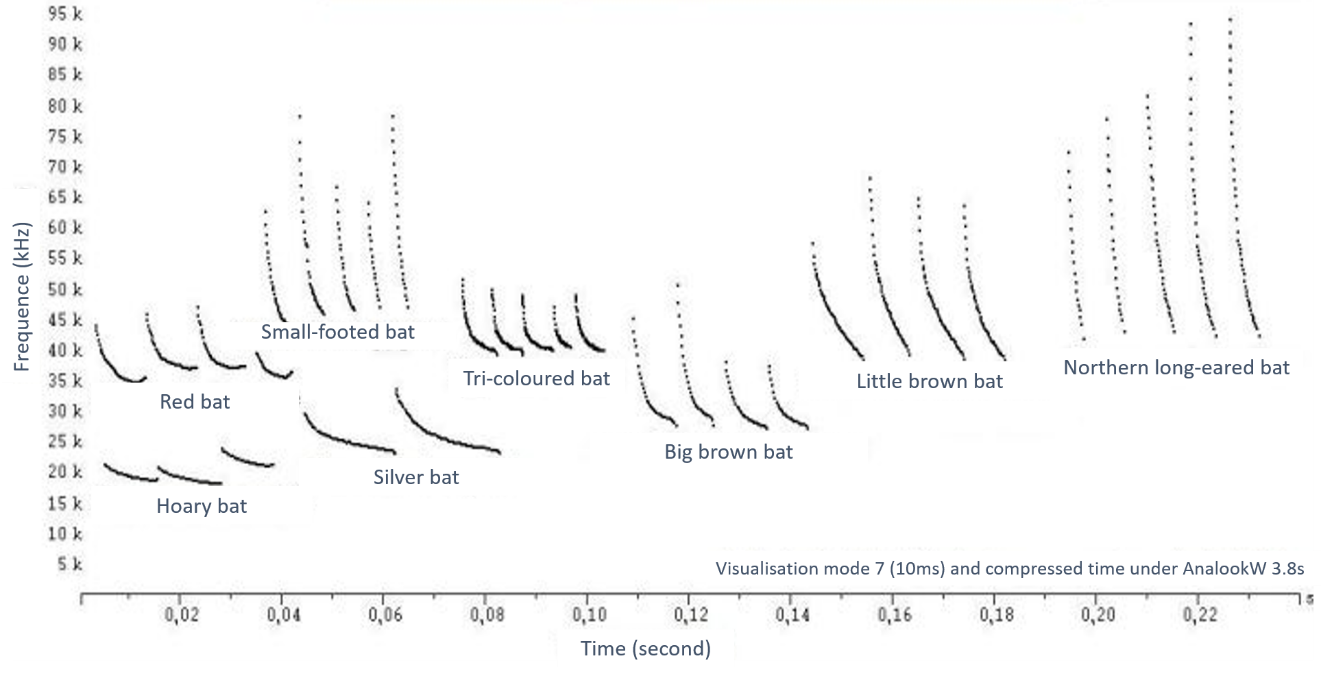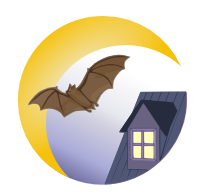Echolocation is a strategy used by bats to navigate and characterize elements of their environment. All Canadian species of bats uses this strategy.
In order to echolocate, most bats produce very high frequency sounds (i.e. ultrasonic) by contracting their larynx (voice box). By producing these sound waves and listening to the echoes that result, bats can move and hunt in the dark. (Figure 1).
Across the world, bats have amazingly diverse facial morphologies that allow them to optimize the reception of echolocation calls (Figure 2).
The human voice primarily creates sound waves between 125 and 210 Hertz (Hz) whereas, bats generate echolocation calls that are between 15 000 Hz and 150 000 Hz. As a result, the echolocation calls of bats are too high pitched to be perceptible by the human ear. Using echolocation, some species of bats can detect objects as thin as a human hair at ten meters away in complete darkness! This is very useful for bats because they hunt small flying insects.
When a bat closes in on its prey, it makes sound pulses that become closer together to get more detail regarding the location and movement of its prey. The rate of sound wave production also depends on the environment where the bat is flying. In an open area, like a field, the bat will space out its calls more than in a forested area, where there are more obstacles. Many bat species will also reduce call production when they are leaving their roosts in order to reduce predator detection.

Echolocation calls can be used to differentiate different species of bats. The characteristics of calls emitted by different species can differ immensely. In fact, making recordings of bat calls is an (Figure 3) important way to determine what species of bats are living in an area. In order to do this, researchers need to use ultrasonic detectors because bat calls are imperceptible to the human ear (Figures 4 and 5). The professional models of these bat detectors are expensive, but recently more affordable models for the general public have been released that include algorithms that allow citizen scientists to identify the species making the call with a reasonable degree of certainty.
Bat detectors record echolocation calls and allow you to visualize them as sonograms. The recorded calls can be characterized by their duration, frequency, and shape to ultimately identify the species that made the call (Figure 6).

Identifying species using calls is not an exact science and some species are difficult to distinguish based on sonograms only. For example, calls of northern long-eared bats, little brown bats, and the eastern small-footed bats are especially difficult to differentiate. To differentiate species with similar calls, acoustic professionals take into account what the bat is doing at the time it is making its call. When a bat captures an insect, the calls differ in feeding steps which include the search, detection, the approach, and finally, the attack. When bats attack prey they make a “feeding buzz”, which is a sequence of continuous calls of short duration (Figure 7). During the species identification, it is also important to consider noise pollution, because many other ultrasound sources can add distortions or skew the results, like high-voltage lines, waterfalls, or other animals such as flying squirrels.


